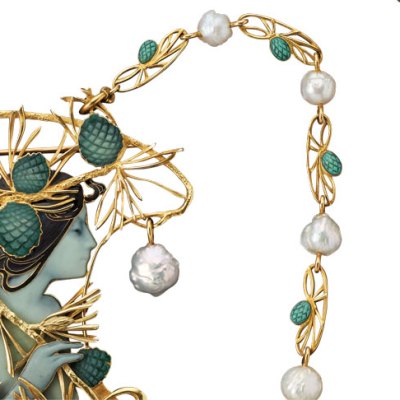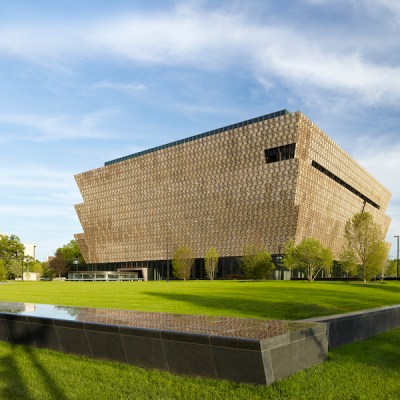Annihilating all that’s made / To a green thought in a green shade.’ Andrew Marvell’s words, which speak of how ideas might bud in the seclusion of a garden, come to mind at the studio of the painter Raqib Shaw. At his south London base, Shaw has transformed the roofs, balconies, and yards of an old factory building into an idyll of creepers, climbers, and flowering shrubs. At its still centre is the collection of ancient bonsai trees of which Shaw is the steward. Entering this world feels like being let in on a secret.
When I visited to discuss Shaw’s current exhibition at the Whitworth in Manchester, he was as eager to talk about gardening as about art. He insisted we sample the first of the season’s honey, extracted from his rooftop hives the previous day; its striking flavour, he was sure, derived from the white grape hyacinths that the bees had pollinated earlier in the spring. The following day was to be spent in the nurseries, selecting summer plantings. He was trying to draw more birds to the garden, he said, as he caught the song of the wren-warbler that he had nicknamed Maurice.
Few, if any, private gardens in London convey such a powerful sense of the profusion that containment makes possible. For Shaw, it has been a place to focus the senses, attending to the richness of botanical life, to its details and unfurling knowledge. If this is an aesthetic retreat, then it is one that has made itself felt in the meticulousness of his paintings, with their painstaking application of enamel and studied sense of the relationship between colour and fantasy.
Shaw is by no means the first artist to have cultivated a hortus conclusus in which their work has taken root and flourished. The great artist-gardeners of the late 19th century, among them Gustave Caillebotte and Pierre Bonnard, recently featured in ‘Painting the Modern Garden’, an uplifting exhibition at the Royal Academy in London last spring. The most celebrated of them, of course, was Monet, whose water garden at Giverny inspired the waterlily paintings that were his main focus from 1899 until his death in 1926. It is a shame that, however well kept the site, the sheer number of visitors to Giverny today makes it difficult to conjure the contemplative atmosphere in which they were created. Selfie sticks do not delicious solitude make.
Charleston, East Sussex. Photo: pam fray/Wikimedia Commons (used under Creative Commons licence [CC. BY 2.0])

Then there are those gardens cultivated by the modernists, in and through which they advanced their art. In the walled garden at Charleston in Sussex, Vanessa Bell and Duncan Grant nurtured what was, in effect, a studio en plein air, its palette and arrangement occasioning both garden scenes and still lifes. A very different painter’s garden was that of Georgia O’Keeffe in Abiquiú, New Mexico, reclaimed from the dry earth and felt in the fierce presence of her flower paintings. Thankfully, it has recently been restored by the Georgia O’Keeffe Museum, the Santa Fe Botanical Gardens, and local students.
The Garden Museum in London, located in the church of St Mary-at-Lambeth, reopened in May after an 18-month redevelopment, which has seen the creation of a modern cloistered garden designed by Dan Pearson and much-improved gallery spaces focusing on the history, design and hard work of gardening. Spread throughout these displays are photographs, drawings, and paintings – the most arresting of which is Harold Gilman’s Portrait of a Black Gardener (c. 1905).
But also welcome is a discrete gallery devoted to artist-gardeners and the reciprocity between art and horticulture. The artists range from James Sowerby, whose illustrations helped to propagate botanical knowledge in late 18th-century Britain, to modern British artists such as John Nash, Anthony Gross and Cedric Morris – the latter represented by a painting of a bulky cabbage, somewhat belying those daintier images of the irises that Morris lovingly bred at Benton End in Suffolk. What a coup it would be if the museum could occasionally bring in further works by other artist-gardeners, on loan from institutions with larger art collections; it would be fitting for such a display to evolve, in keeping with the constantly changing nature of its subject.
After A Midsummer Night’s Dream by Raqib Shaw. © Raqib Shaw and the Whitworth, the University of Manchester

From the July/August 2017 issue of Apollo. Preview and subscribe here.



